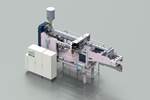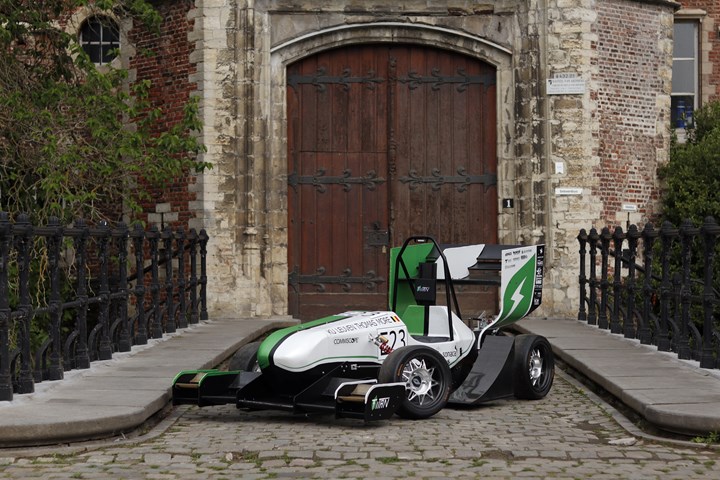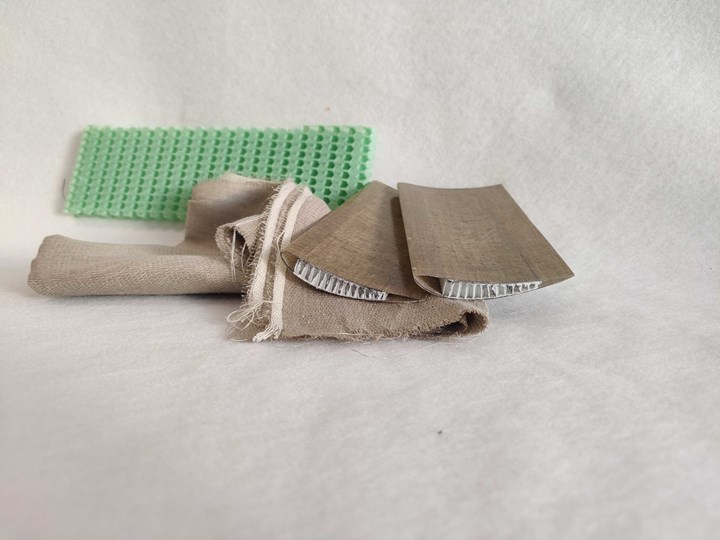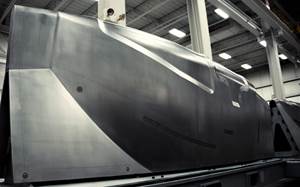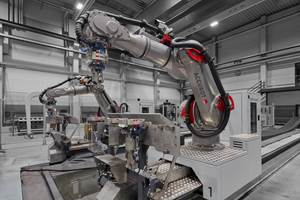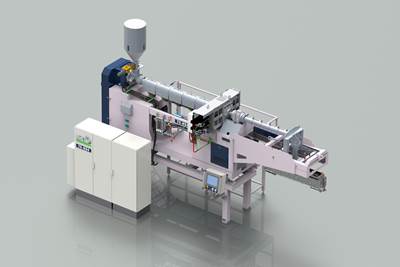Formula Electric Belgium's Titan race car features EconCore rPET honeycomb
Front wings and undertray comprise the honeycomb core material, the latter reducing wing weight by 26% compared to the previous year, and able to withstand forces 1,000 times its own weight.
EconCore’s (Leuven, Belgium) award-nominated recycled polyethylene terephthalate (rPET) honeycomb material is being harnessed by the Formula Electric Belgium team for the front wings and the entire undertray of their 220-kilogram (485-pound) Titan race car, which was unveiled on May 24, 2022.
Based on recycled PET material, the rPET honeycomb cores are made up of 100% recycled material, predominantly sourced from non-food post-consumer and industrial PET waste streams. Offering high mechanical performance, low weight and high temperature stability, EconCore says rPET is the material of choice for a range of applications, including motorsport.
The team of engineering students produced the front wing skin out of natural flax fiber. Last year, the team used carbon fiber-reinforced polymers (CFRP) for the skins of the wing profile, and required aluminum stiffeners —similar to those found in airplane wings — to give them greater stiffness. However, to adapt a more sustainable approach without compromising on performance, Formula Electric Belgium substituted the aluminum stiffeners with rPET honeycomb to produce a sandwich panel which was both lighter and more rigid.
The rPET cores were thermoformed. The Formula Electric Belgium team started with constant thickness to shape into the wing, using heated molds to press the core into shape. EconCore says the use of its technology reduced wing weight by 26% compared to the same-sized wing from the prior year, enabling the race car to go from 0-100 kilometers per hour in 2.5 seconds. The front wing component is also highly rigidity, capable of withstanding forces equivalent to almost 1000 times its own weight. The Titan race car has undergone multiple tests within its various stages of development; under a three-point bending test, the wing was capable of withstanding 46 kilograms (101 pounds) of force.
Throughout the development stages, EconCore says it opened up its doors to the Formula Electric Belgium team, enabling them to use the company’s testing equipment to evaluate the strength of the material, which proved crucial to the entire development process.
“With the rPET honeycomb core, Formula Electric Belgium were able to produce a highly rigid, lightweight front wing component which weighed in at only 50 grams,” Wouter Winant, technical manager at EconCore, says. “And at the same time this shows that achieving optimal performance is possible with sustainable materials. Our rPET honeycomb core technology is available to be licensed for a variety of applications and Formula Electric Belgium have perfectly demonstrated the material’s versatility.”
Formula Electric Belgium has been bringing together aspiring engineers from Belgium-based Katholieke Universiteit Leuven, UGent, UHasselt, UCLouvain and Thomas More University for the last 12 years. The program was initially set up to provide engineering students with a real-world working environment to grow their technical skills by building complete race cars every year to compete in the worldwide Formula Student competitions.
The next steps for the race car are to undergo testing and setup sessions prior to the first competitive race in the Netherlands in July, followed by further races in Hungary and Croatia in August. For the competitions themselves the Formula Electric Belgium team will put their race car through a range of dynamic and static events which they will be scored on. The dynamic events include acceleration, skid pad, autocross and endurance, while the static events are cost analysis, design analysis and business plan presentation. The competition isn’t only about how the cars perform but also the innovative approach that each team has undertaken in the design and manufacture of their vehicle.
“The rPET honeycomb core was an exciting and interesting material to work with and the entire EconCore team were enthusiastic in supporting us while we used their facilities,” Karel Van Wambeke, aerodynamics engineer at Formula Electric Belgium, emphasizes. “We can’t wait to put our hard work to the test and see how we perform in our first competition in the Netherlands in July.”
Related Content
Improving carbon fiber SMC simulation for aerospace parts
Simutence and Engenuity demonstrate a virtual process chain enabling evaluation of process-induced fiber orientations for improved structural simulation and failure load prediction of a composite wing rib.
Read MoreActive core molding: A new way to make composite parts
Koridion expandable material is combined with induction-heated molds to make high-quality, complex-shaped parts in minutes with 40% less material and 90% less energy, unlocking new possibilities in design and production.
Read MoreNine factors to consider when designing composites cure tooling
Gary Bond discusses the common pitfalls and compromises when designing good cure tooling and their holistic significance for a robust composite production process.
Read MoreAutomated robotic NDT enhances capabilities for composites
Kineco Kaman Composites India uses a bespoke Fill Accubot ultrasonic testing system to boost inspection efficiency and productivity.
Read MoreRead Next
EconCore, ThermHex Waben optimize honeycomb core production
An investment in additional MEAF 75-H34 extruders reduce energy consumption in honeycomb production by up to 65% and double capacity.
Read MoreVIDEO: High-volume processing for fiberglass components
Cannon Ergos, a company specializing in high-ton presses and equipment for composites fabrication and plastics processing, displayed automotive and industrial components at CAMX 2024.
Read MoreDeveloping bonded composite repair for ships, offshore units
Bureau Veritas and industry partners issue guidelines and pave the way for certification via StrengthBond Offshore project.
Read More

